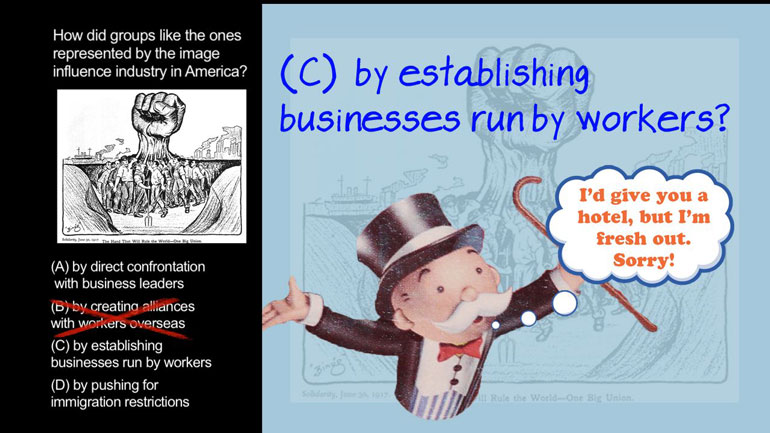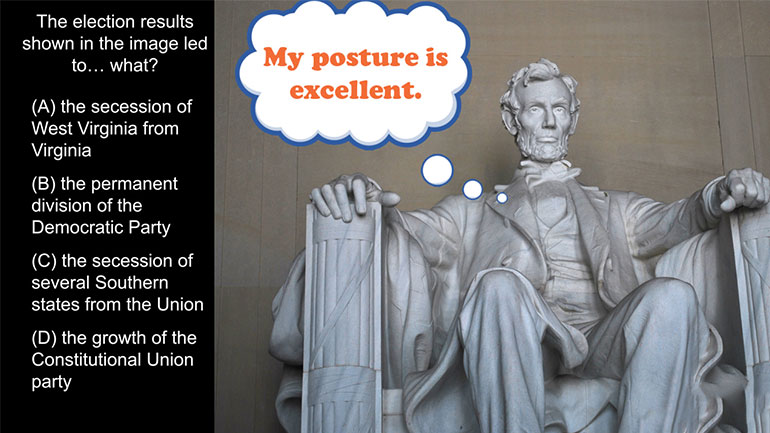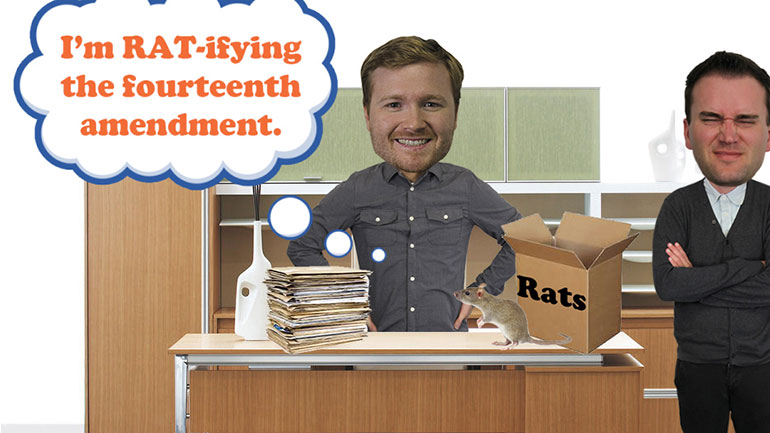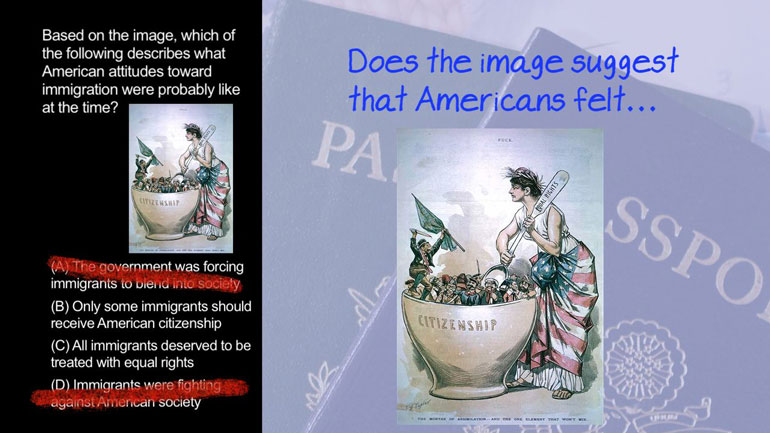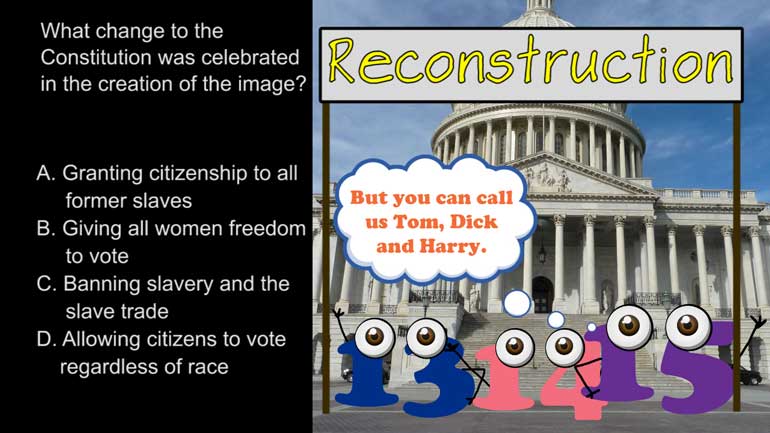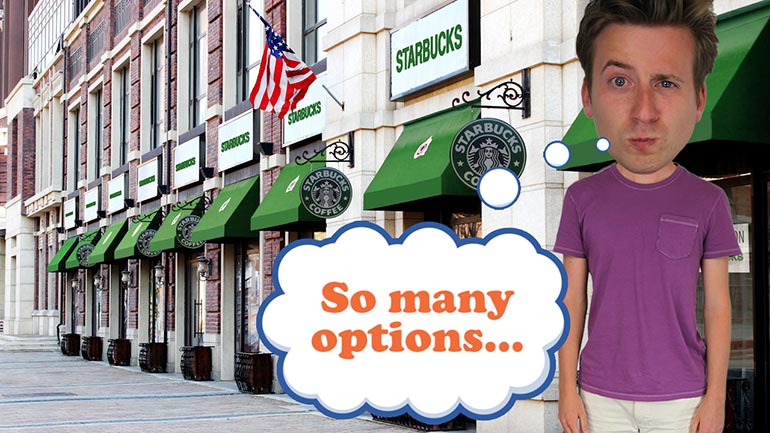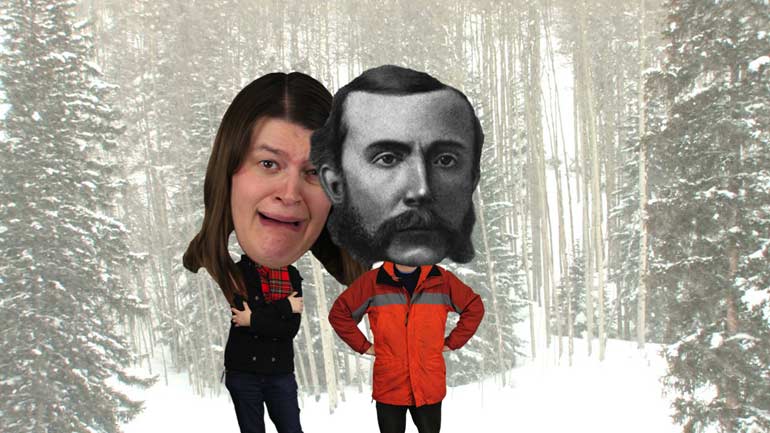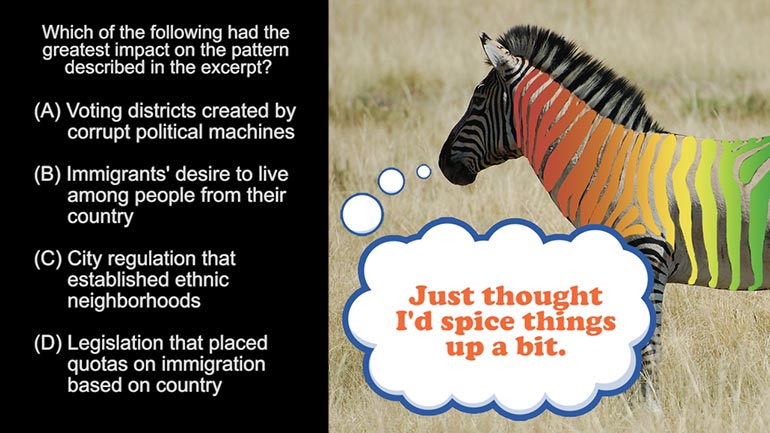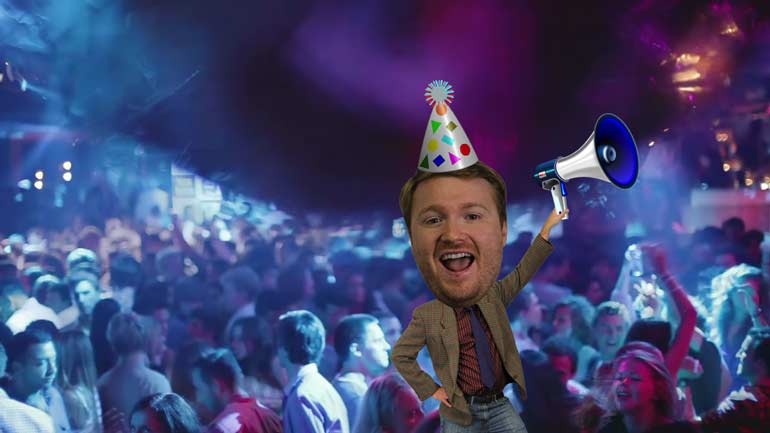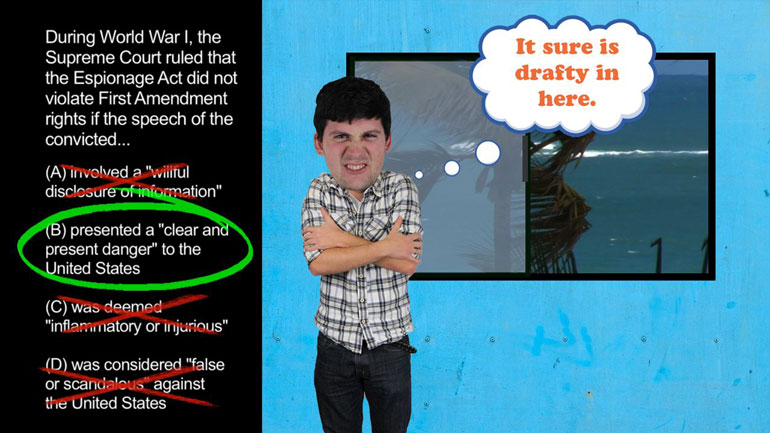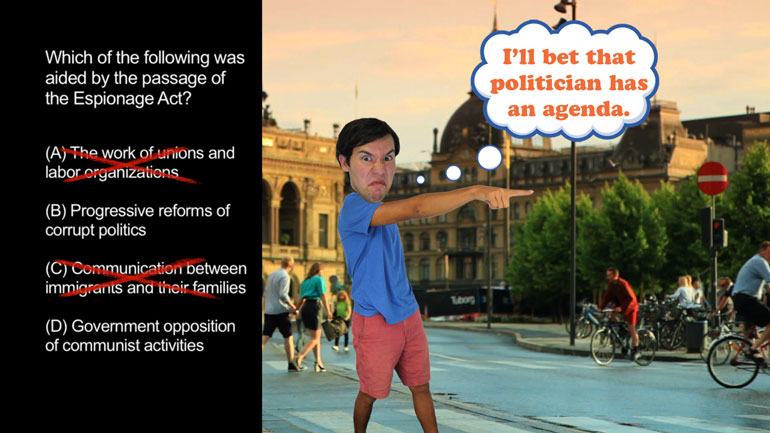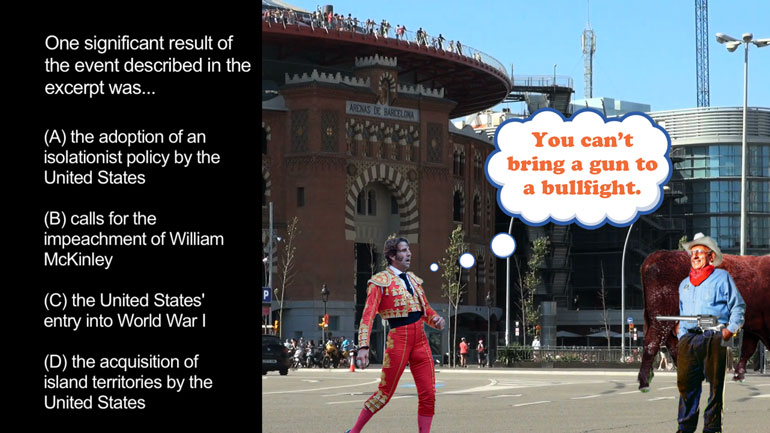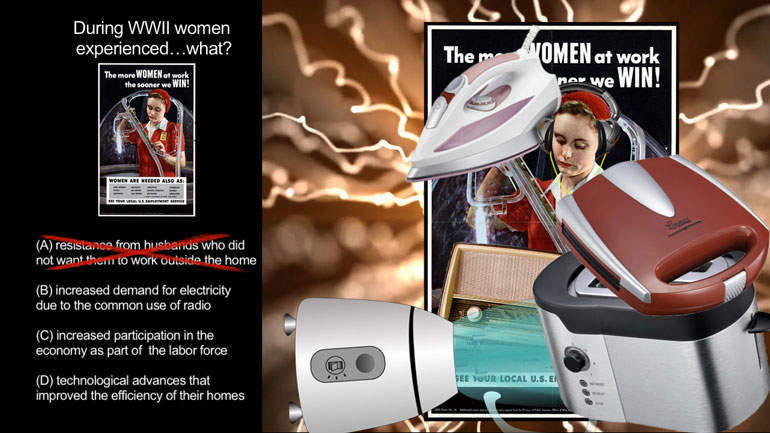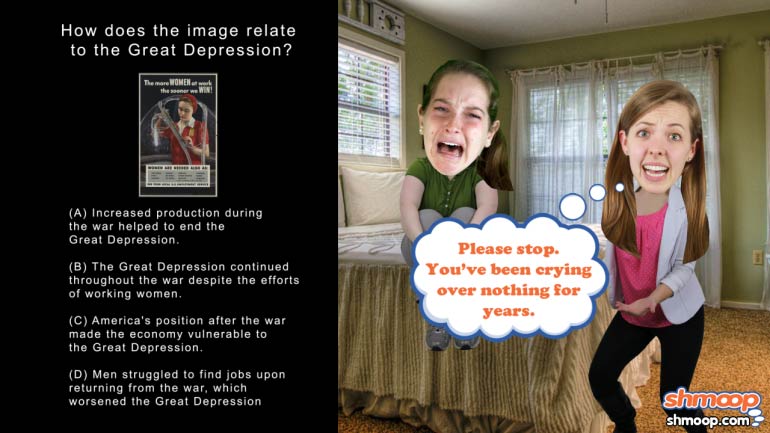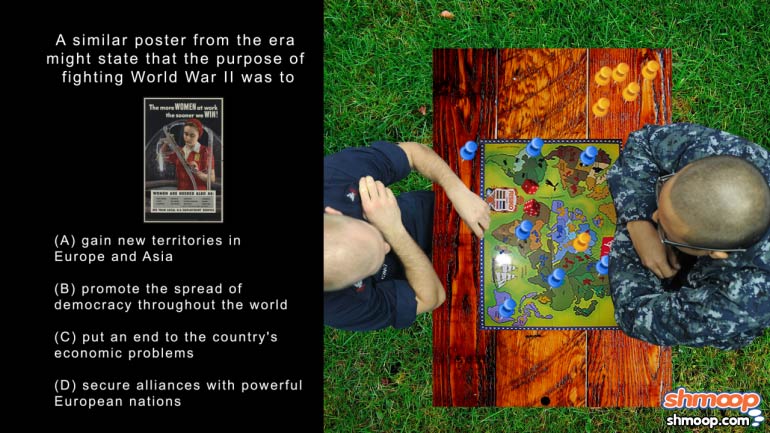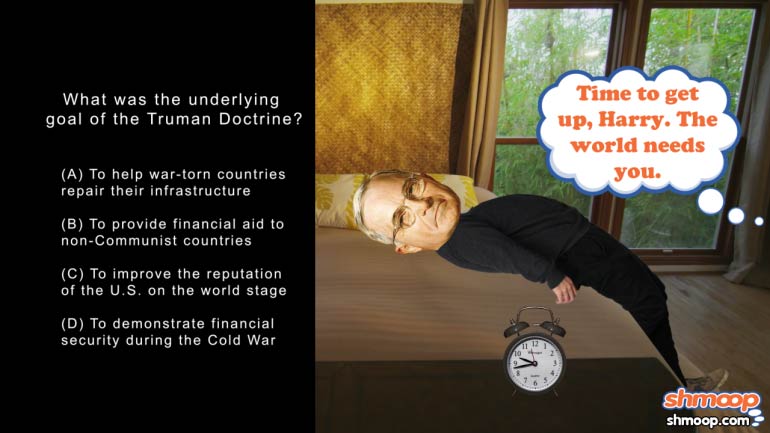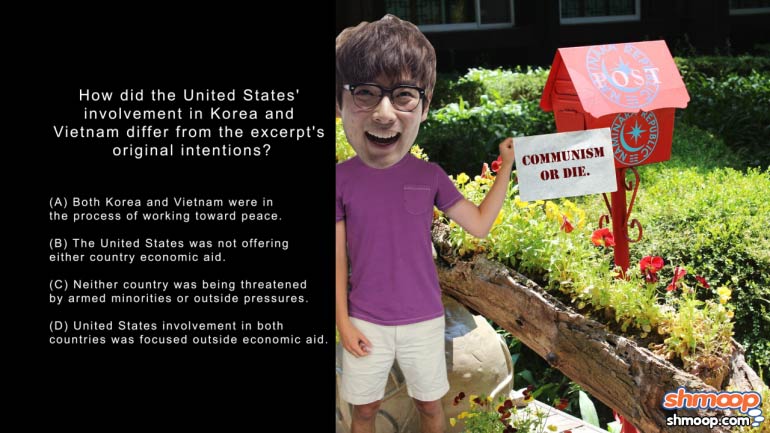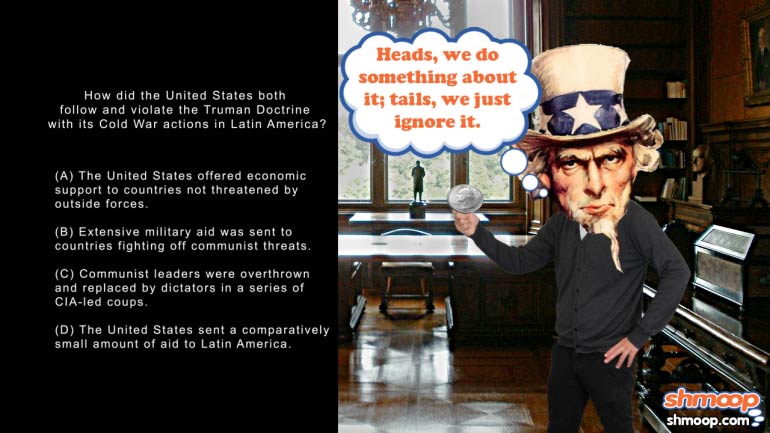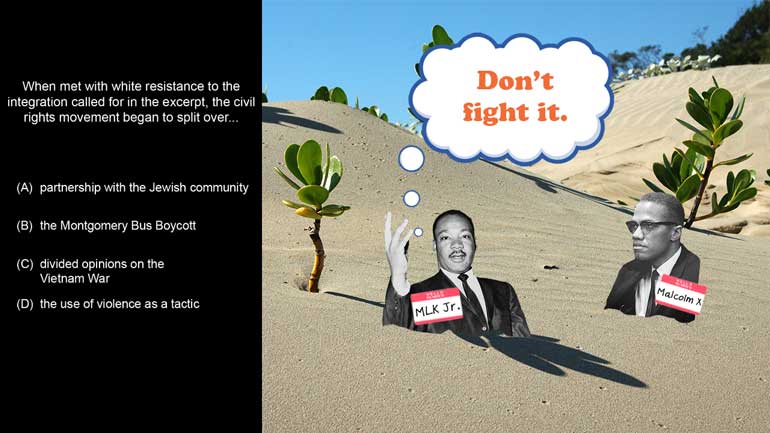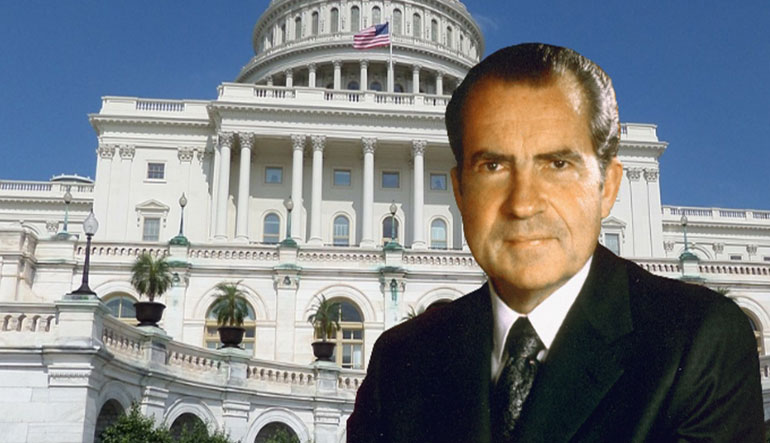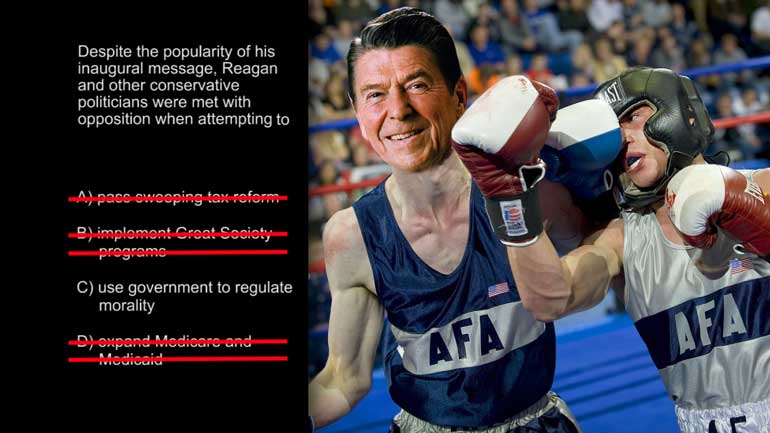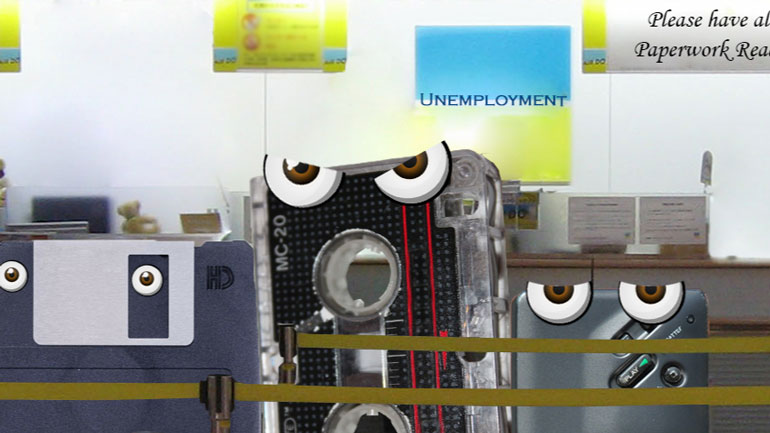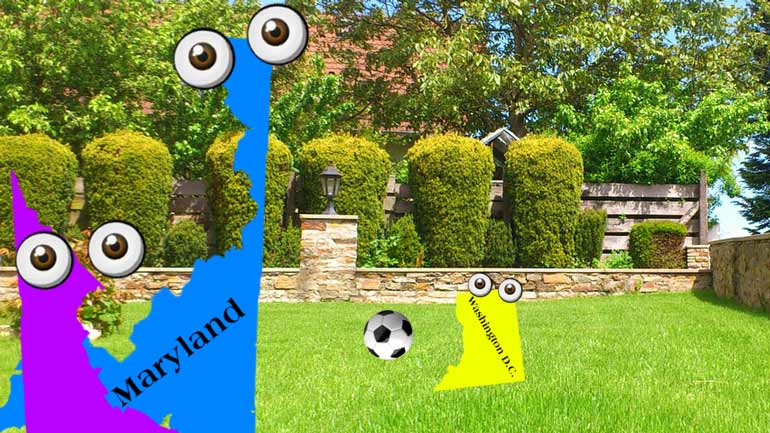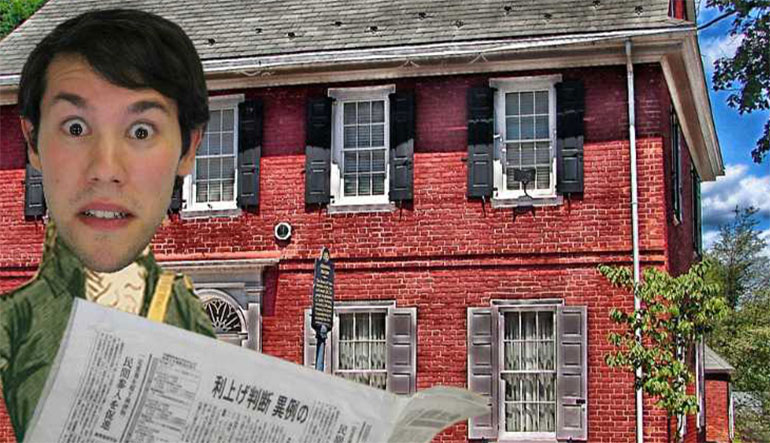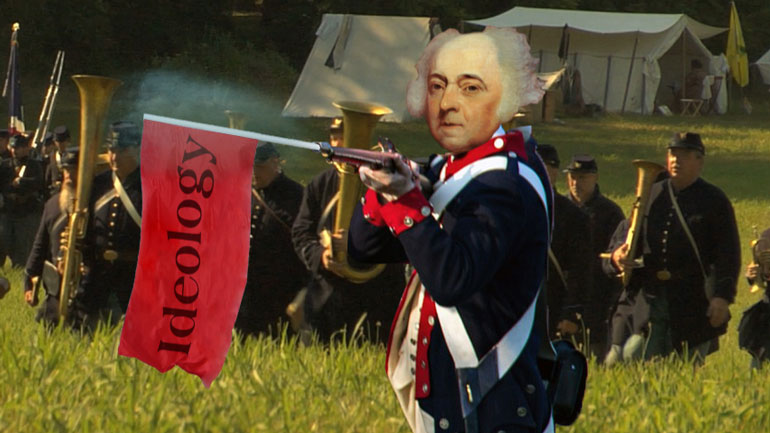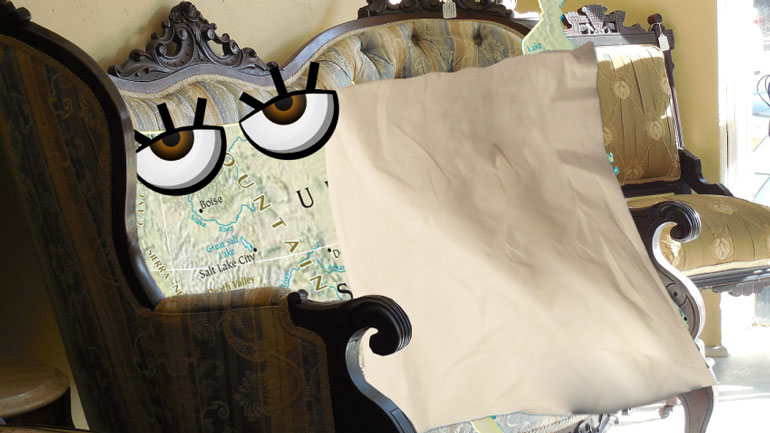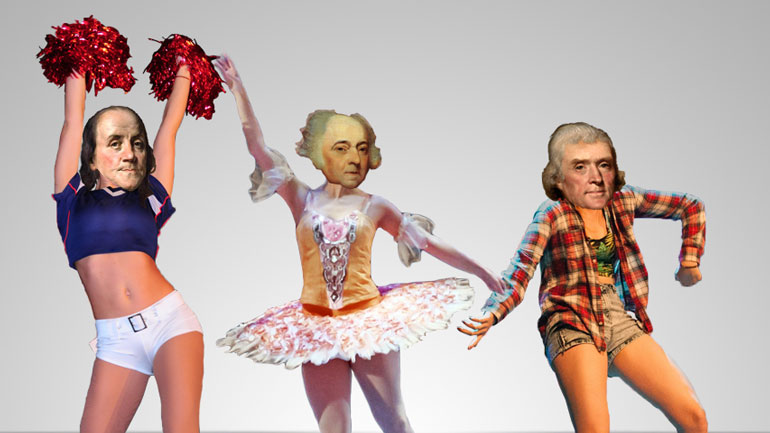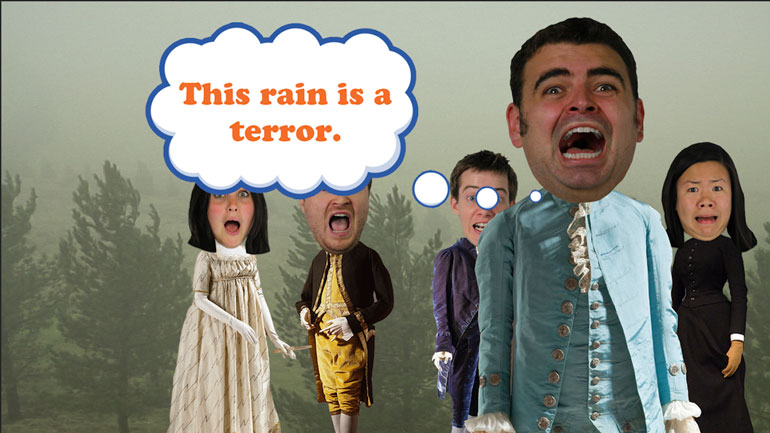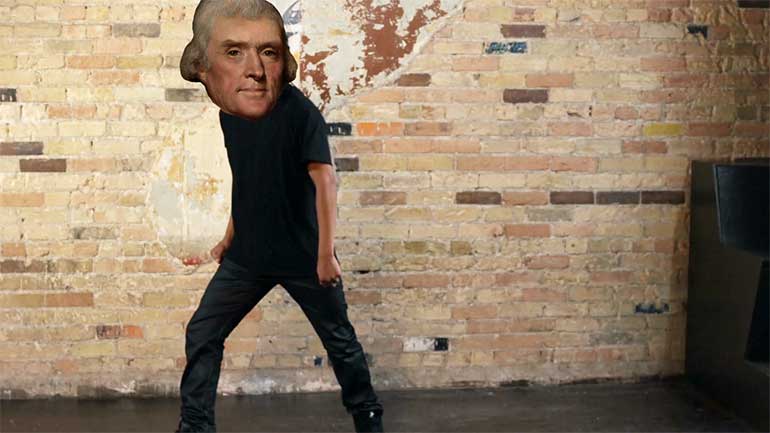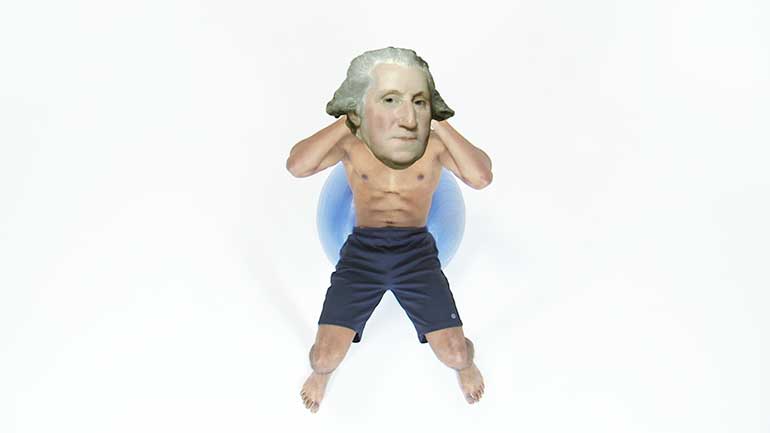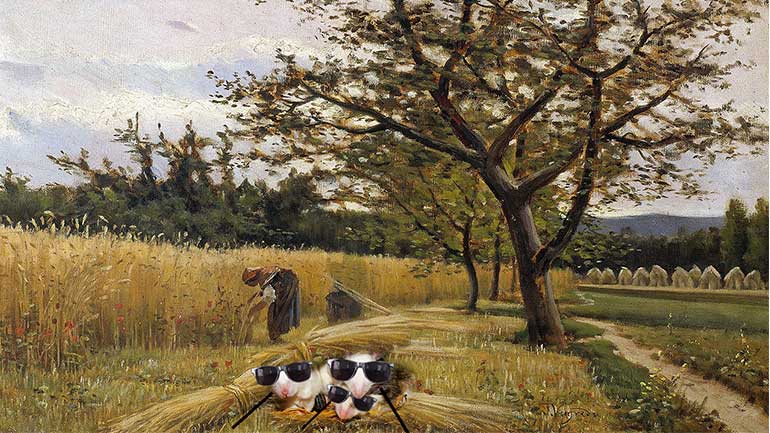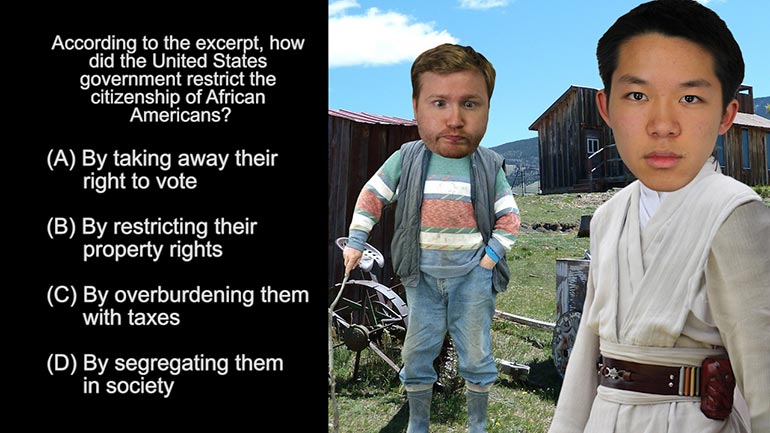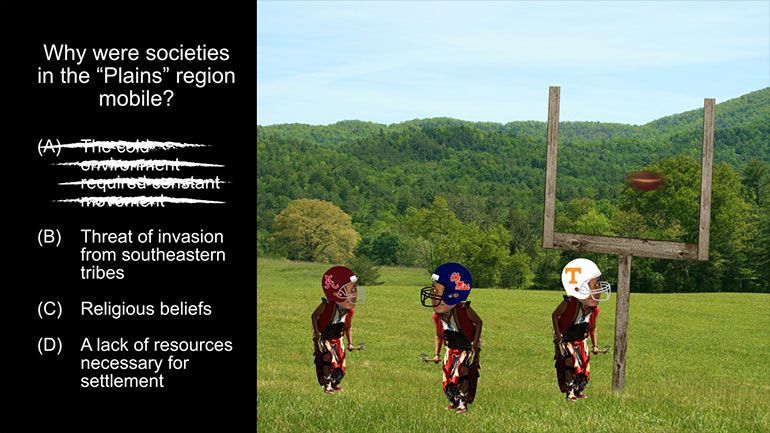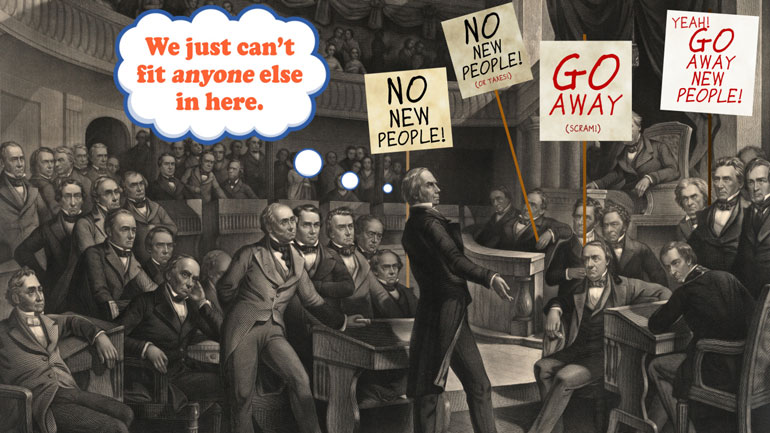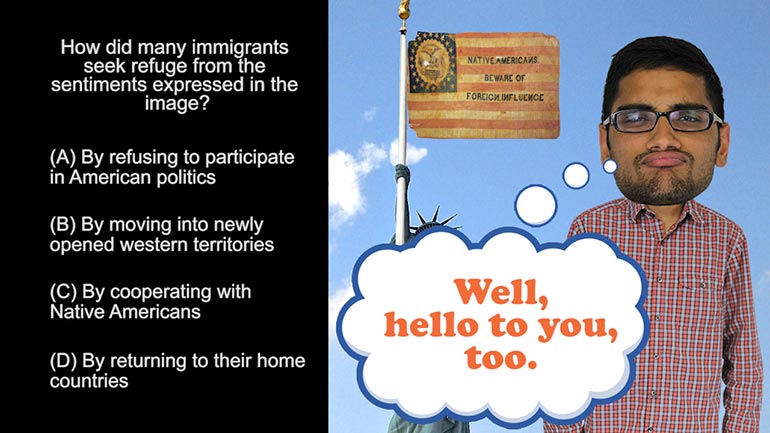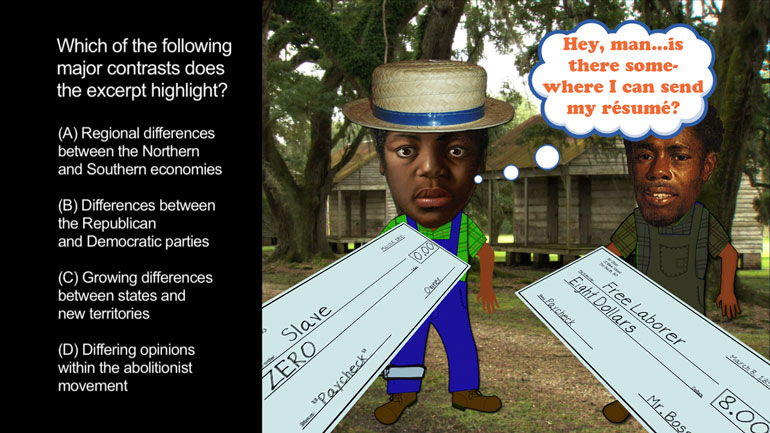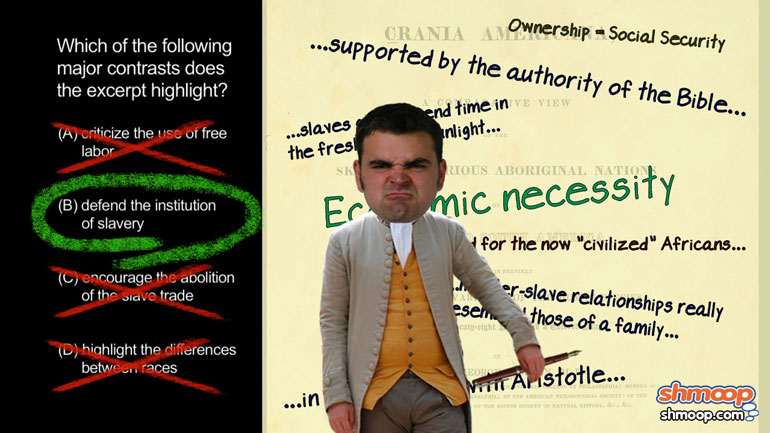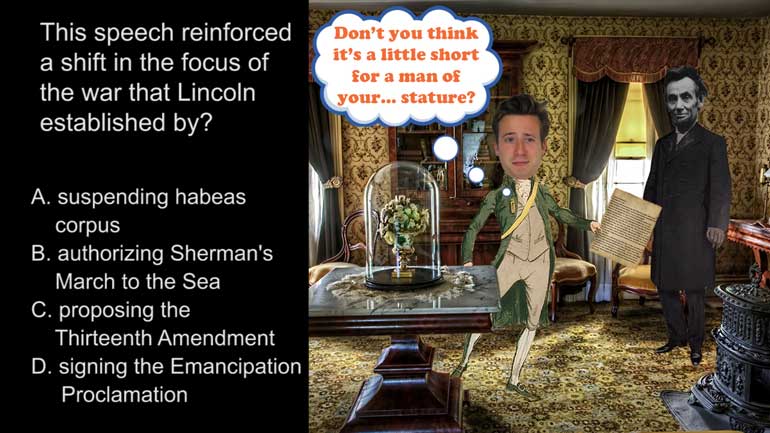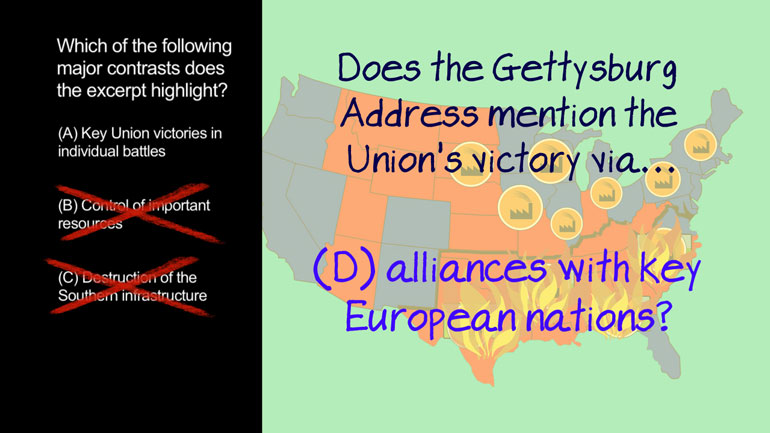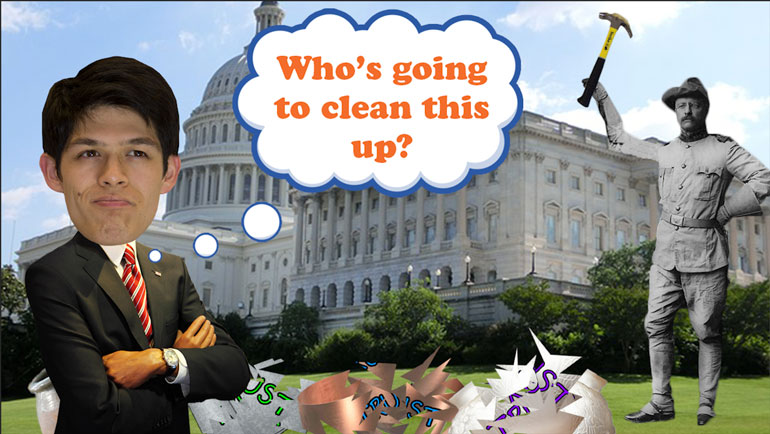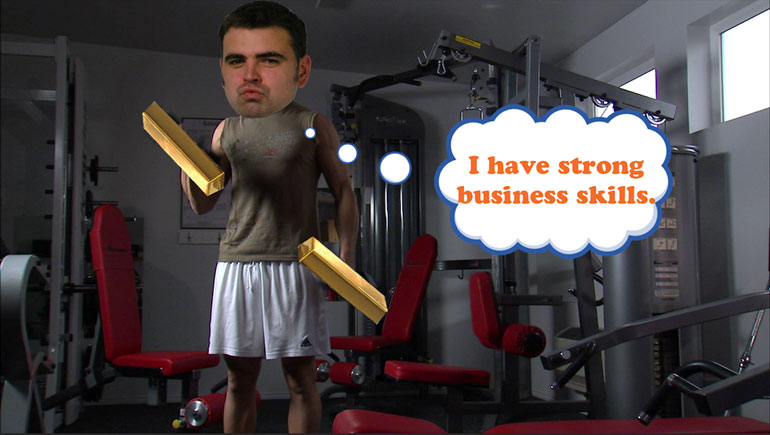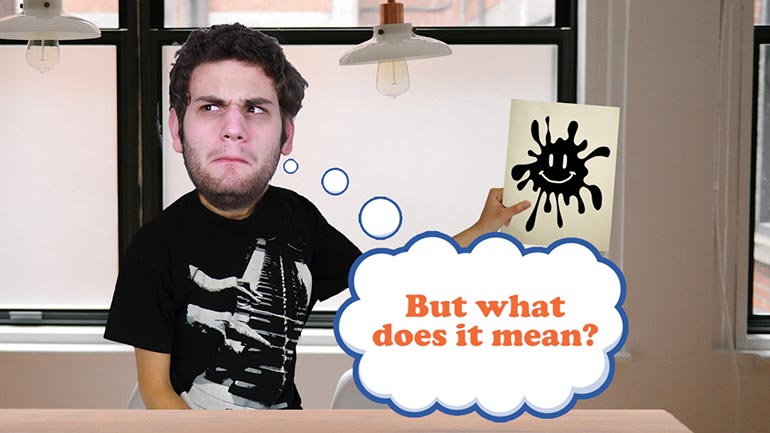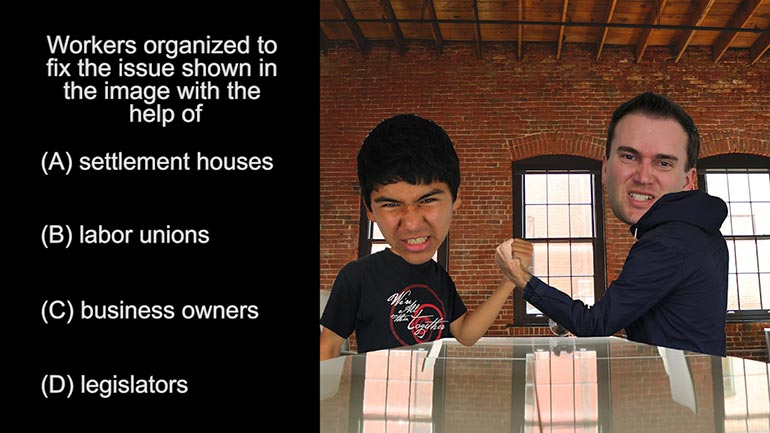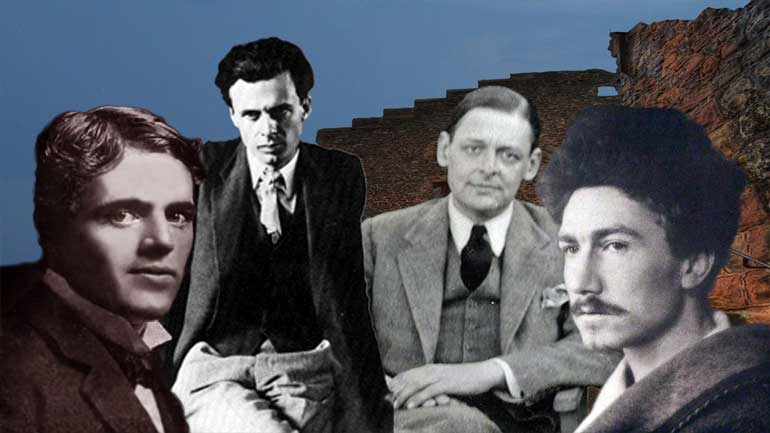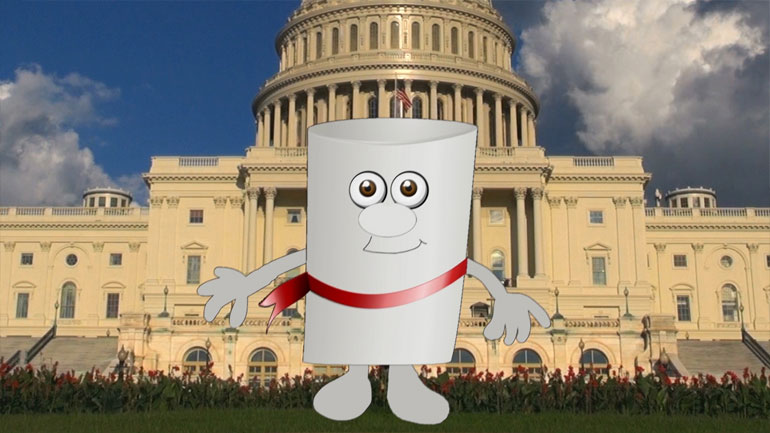ShmoopTube
Where Monty Python meets your 10th grade teacher.
Search Thousands of Shmoop Videos
AP U.S. History Videos 277 videos
AP U.S. History Diagnostic 1. Relationships like the one shown in the image resulted in the development of...what?
AP U.S. History Diagnostic 15. How did groups like the ones represented by the image influence industry in America?
AP U.S. History Diagnostic 10. What led to the splintering of the political parties shown in the image?
AP U.S. History Exam 1.31 195 Views
Share It!
Description:
The appeal of city living has always been strong. Can you figure out why new immigrants chose to live in big cities? Hint: they weren't trying to be cast in a revival of "Cats".
Transcript
- 00:00
[ musical flourish ]
- 00:03
And here's your Shmoop du jour, brought to you by tenement housing,
- 00:07
ten times the roommates at ten times the price. What a deal.
- 00:11
All right, take a look at this excerpt.
- 00:12
[ mumbles ]
Full Transcript
- 00:17
All right, and the question:
- 00:18
Despite the cultural divide, many new immigrants chose to live
- 00:22
in big cities because... why?
- 00:24
And here are your potential answers.
- 00:29
Well, for many new immigrants in the 19th century,
- 00:31
living in the big city was much slicker
- 00:34
than settling in a small town.
- 00:36
Let's see why these folks felt the urban was
- 00:38
so superior to the suburban.
- 00:42
Well, despite the cultural divide, did many immigrants choose
- 00:44
to live in big cities because A -
- 00:46
living conditions were safer and services were regularly provided?
- 00:50
Well, remember How the Other Half Lives
- 00:52
was published in 1890, which was
- 00:54
before the big city clean-up of the Progressive Era.
- 00:57
That means that living conditions were both dangerous
- 01:00
and expensive. Were immigrants choosing to live in big cities
- 01:03
because B - immigration regulations restricted them
- 01:06
from moving between states?
- 01:08
Well, while regulations did exist for how many immigrants
- 01:11
there could be from a certain country,
- 01:13
once they got here, immigrants weren't prohibited
- 01:15
from moving between states. So that eliminates
- 01:17
B, as well. Which means that immigrants
- 01:19
chose to live in big cities because D -
- 01:22
employment opportunities were available in factories and big businesses.
- 01:26
Despite the downfalls of living in urban areas,
- 01:28
factories and big businesses were booming
- 01:30
and they offered jobs to immigrants that couldn't be found in a small town.
- 01:34
So D is the right answer.
- 01:35
Eventually, reformers passed protections that guaranteed
- 01:38
a fair wage and safer housing for immigrants
- 01:41
and the working class, which helped make the other half
- 01:44
not half bad.
- 01:46
[ whistle ]
Related Videos
Ever heard of a "living document"? They eat and breathe just like the rest of us! They even walk around on their own two legs. Okay, fine—maybe t...
If the Puritans had gotten their way, religion would play a much larger role in lawmaking these days. Want to know more? Watch the video for all th...
What happened between the creation of the Articles of Confederation and the ratification of the current U.S. Constitution? This video analyzes the...
The Modernists thought the world had a lot of problems, and they were intent on fixing them—or at least talking about fixing them. Unfortunately,...
This video explains Federalism and the quest for a fair balance between state and national power. It covers the progression and compromises of Fede...

